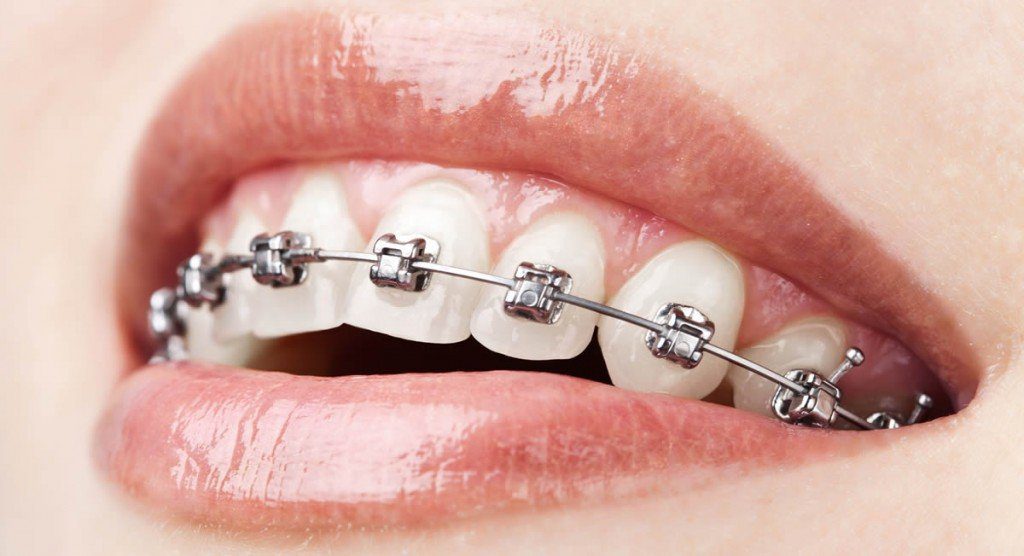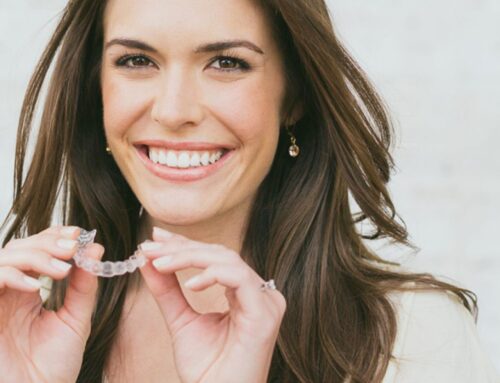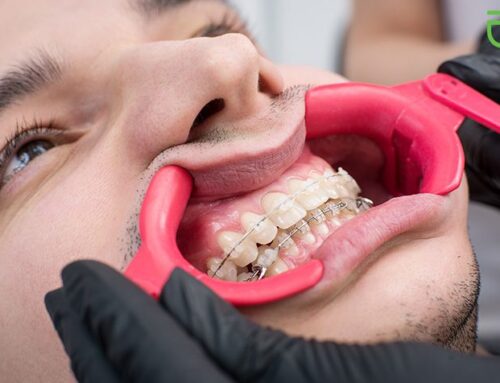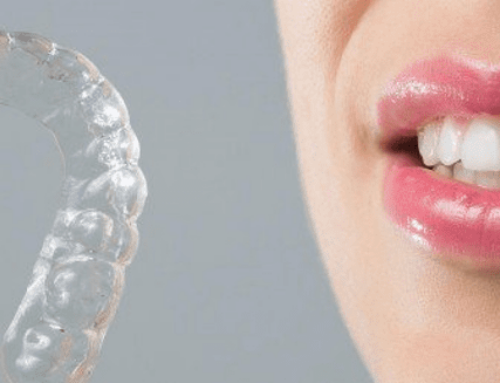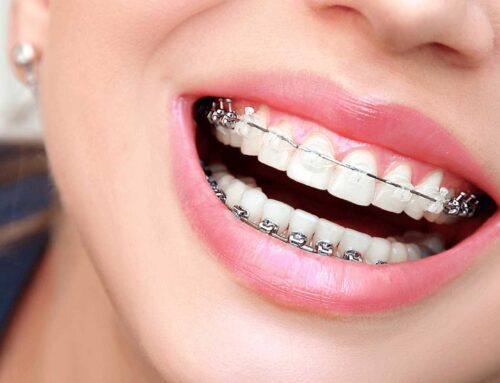Daily Life Wearing Orthodontics
Out of all the orthodontic procedures you can endure, braces are one of the toughest. Sure, a root canal can be more painful, but it’s over in a few days, whereas braces are something you have to deal with day in and day out.
That being said, braces are important, and in most cases, a dentist recommends them because a patient needs them to correct a serious oral issue. They are designed to improve a patient’s orofacial appearance, including overcrowded teeth, overbites, underbites, jaw positioning or to avoid potential jaw disorders. If not treated with braces, these problems will worsen and can lead to severe issues like gum disease, jaw pain, tooth decay and other health issues like headaches and earaches. The reality is that if your dentist recommends braces, there is a reason, other than for cosmetic reasons. And in the days leading up to the braces being placed on your teeth, you will want to equip yourself with the knowledge needed to care for them.
Whether you are choosing to get braces or your orthodontist is advising you to do it, you will need to adjust to a new life. Braces are a big responsibility. You must clean them, care for them, have regular checkups and make daily adjustments to safeguard them throughout your treatment journey.
Let’s look at what it’s like to wear braces. We’ll explore the everyday life and break down what you will need to do to shorten treatment duration while maximizing the desired effect. Braces have many benefits but do require a certain level of commitment.
Georgian Dental® offers all types of braces, including traditional metal braces, ceramic braces, Invisalign braces, even custom braces using gold, platinum, silver, etc. If you haven’t already read our informative posts on all the different types of braces, give them a read as they will give you some ideas to discuss with your dentist at your free initial consultation.
Your First Day in Braces
There is no standard amount of time that someone will need to wear braces. Most are around two years but some can have them removed within a year. It depends on the state of a patient’s teeth and their specific situation. The braces’ journey, though, start on one day.
After you’ve consulted with your orthodontist and decided on what type of braces you want—ceramic or metal—you will have them applied to your teeth. In most cases, this is painless so don’t be anxious about this part of the process. Some discomfort is normal but it’ll pass in a few days and shouldn’t disrupt your everyday life.
Before you walk out the door with your new braces, we ask that you do the following:
- Book your next appointment
- Make sure you understand what supplies you will need to care for your braces
- Ensure you are not experiencing any discomfort in your mouth, gum or tongue
- Walk away confident with what you need to do in between visits
The first day can be jarring. The adhesive on your teeth needs time to dry and it’s an unfamiliar sensation that you’ll need to get used to. Don’t worry, it gets easier. All you need to do is develop a routine.
Regular Checkups with your Orthodontist
Before we get into the daily maintenance of your braces, you will want to make sure you understand how often you need to have your braces professionally inspected. Every patient is different but the recommendation is to make an appointment every three months for a checkup and cleaning. This is something your orthodontist will discuss with you.
Physical Activities and Foods to Avoid
If you wear braces there are certain types of foods you might need to avoid. Unfortunately, some of these may be your favorites, so be aware of this going into it. With sports or exercise that can involve impacts, such as hockey, you’ll need to invest in a quality mouthguard.
Here’s a list of foods you should either avoid or eat with caution. It’s recommended that you consult with your orthodontist to make sure there aren’t other items you’ll need to avoid. If you are unsure if a certain food or drink could damage your braces, then it’s best to err on the side of caution.
- Pizza crust…pretty much relegates you to square pieces of pizza unless you cut the crust
- Ice chewing
- Hard pretzels, Doritos, hard shell tacos, Cheetos, Fritos or any corn chip with a tough exterior
- Certain types of gum
- Caramel candy
- Ribs
- Nuts
- Any type of jerky
- Popcorn
- Uncooked vegetables
- Corn on the cob
- Anything made with marshmallow or molasses. Be careful with any foods that are sticky
Remember, some of these foods are off-limits while others can still be enjoyed if you’re cautious while eating them. For instance, you can slice your apple before eating it, corn can be cut off the cob, etc… If you are prone to chewing on your nails or pens and pencils than you must break those habits.
How to Care for Braces?
Braces aren’t of the set it and forget variety. They take care, work and effort to get the results you want in the shortest amount of time possible.
Brushing
People with braces need to brush their teeth more often than normal. Food tends to get caught in braces, which can lead to damage, staining or even decay, so you’ll need to brush after every time you eat.
Brushing takes a bit more time since you must remove the interarch rubber bands that connect the top and bottom of your mouth.
To brush with braces, do the following:
- Brush your teeth, gums and the brackets with the toothbrush at a 45-degree angle
- Brush for at least two minutes
- Be gentle as to not damage the wires. If you have ceramic brackets you need to also be careful as they can break from vigorous brushing
If you have invisible braces you can brush them with just a bit of toothpaste and rinse them with water.
Rinsing/mouth wash
You need to incorporate rinsing into your daily oral hygiene routine if you don’t already. Simply rinse with tap water before you brush. This draws out food particles so that they can be removed during brushing. If you don’t have your toothbrush with you after a meal make sure you’re rinsing until you can brush your teeth properly.
Flossing
Braces means having to floss once a day. It can be tricky as the wires prevent you from flossing in the traditional sense. You can try to thread the floss above the wire and in between your teeth but it takes great concentration and hand dexterity. If you go this route, use wax floss, which is less likely to catch on wires.
We recommend using a floss threader. This will make flossing much easier. It is a simple device that lets you thread floss through your teeth. You can buy it in any grocery or drug store where you buy your other oral hygiene products.
Braces are Worth It
While having braces does involve work and a certain level of sacrifice, there isn’t anything in the process that you can’t adapt to. And in the grand scheme of things, the inconvenience is a small price to pay for that beautiful smile you’re aiming for.
If you’d like to learn more about the various types of braces and possible treatment options for your specific situation, then book your free, no-obligation braces consultation and we’ll answer your questions and help create a plan to get your smile back in style!
Appointment Request
If you’re interested in any of our procedures, and would like to meet with one of our dentists to discuss options, costs and get additional information, complete this short form and we’ll give you a call to arrange for a no-obligation appointment at our Barrie clinic.
